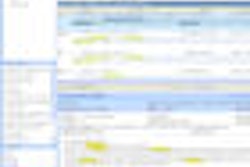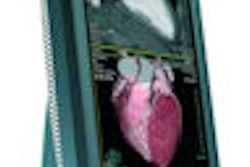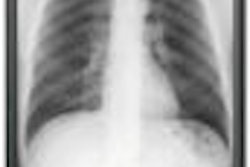SAN FRANCISCO - Thanks to 3D visualization tools, radiologists are starting to get a handle on the image interpretation challenges presented by the data explosion from MDCT scanners. But yet to be resolved are the data archiving questions posed by MDCT, according to a presentation yesterday at Stanford University's International Symposium on Multidetector-Row CT.
For image interpretation, the MDCT community has seemed to settle on a philosophy of "scan thin, read thick." But which version of that data should be stored, according to Dr. Jeffrey Mendel of Tufts University School of Medicine in Boston?
Storing all your thin-section data can overwhelm a network and quickly fill up an archive; storing thick-section data can limit flexibility in revisiting data in the future with new software applications, as well as leave a facility open to medicolegal issues.
"Medicolegally, we have to store all the images used for the radiologist's interpretation," Mendel said. "I simply don't know if a standard like this even applies [in 3D], since it was developed in the hard-copy world."
The archiving issue is very real, despite recent advances (and price drops) in image storage. Sure, you can buy a 1-TB archive at Best Buy these days -- but you'll likely spend far more than the purchase price in electricity, cooling, personnel, space, and the replacement cycle, Mendel said.
One model for sites that have a 3D rendering server and many workstations is to send thick data to a PACS and thin data to 3D workstations. The disadvantage to this approach is that it requires you to maintain thin and thick data storage and makes it hard to integrate desktop-based 3D tools. It also becomes difficult to compare old studies stored with thick data to new exams based on thin data.
Mendel recommends a hybrid approach of selectively using thin data for some cases and thick data for the rest. To do this, it helps to segment your referring physicians into two camps -- high-intensity users who really want to dive into the data, and standard users who are content with a few views. For example, high-intensity users might receive thin data, while thick data are sent to standard users.
He also recommends an update of the "key image" concept used to send particularly illustrative 2D images to clinicians in radiology reports. The key image concept doesn't quite work in the 3D world, Mendel pointed out -- which image would you select in a CT dataset of 3,000 or 4,000 images? And referring clinicians often want access to the full dataset. But the concept of a key series does work.
Mendel believes that ultimately all CT data will be viewed and stored in thin-section formats, but the industry isn't there yet. Until then, a hybrid thin/thick approach may suffice. To get there, MDCT users should discuss future product roadmaps with their PACS and 3D vendors, develop a plan now, and be prepared to modify their approach as technology and the needs of radiologists change.
By Brian Casey
AuntMinnie.com staff writer
May 21, 2009
Related Reading
Auxiliary PACS server aids thin-slice CT data management, May 2, 2006
Copyright © 2009 AuntMinnie.com



















